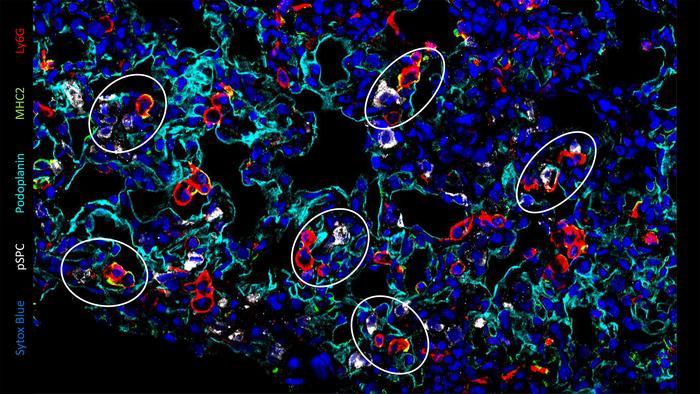Researchers at the University of Liège in Belgium have identified a previously unknown population of macrophages that play a crucial role in repairing lung damage caused by respiratory viruses. This discovery could lead to new treatments for severe respiratory infections and conditions like Acute Respiratory Distress Syndrome (ARDS).
Unmasking the Lung’s Hidden Healers
The study, published in Science Immunology, reveals a unique type of macrophage that appears in the lungs during the early recovery phase after viral infections. These cells, characterized by specific markers, are instrumental in regenerating pulmonary alveoli – the tiny air sacs where oxygen enters the bloodstream.
Dr. Coraline Radermecker, one of the study’s lead researchers, explains: “Our findings provide a novel and crucial mechanism for alveolar repair by these atypical macrophages. We have detailed their characteristics, origin, location in the damaged lung, the signals they require to function, and their role in tissue regeneration, specifically acting on type 2 alveolar epithelial cells, the progenitors of alveolar cells.”
This discovery challenges previous assumptions about post-infection macrophages. Professor Thomas Marichal, another lead researcher, notes: “Our study highlights the reparative role of these macrophages, countering the prevailing idea that macrophages following respiratory viral infections are pathogenic.”
From Overlooked to Center Stage
These healing macrophages had gone unnoticed until now for two main reasons:
1. They express a marker previously thought to be specific to neutrophils, another type of immune cell.
2. They appear only briefly during the repair phase before disappearing.
The research team used advanced technologies like flow cytometry, fluorescence microscopy, and single-cell RNA sequencing to identify and characterize these elusive cells.
Why it matters: This discovery could revolutionize our approach to treating severe respiratory infections and their aftermath. The COVID-19 pandemic has highlighted the urgent need for better treatments for acute lung damage and long-term respiratory issues.
By understanding how these macrophages promote lung repair, researchers may be able to develop therapies that enhance their activity or mimic their effects. This could lead to faster recovery times, reduced risk of complications, and improved outcomes for patients with severe respiratory infections or ARDS.
Prof. Marichal envisions the potential applications: “By targeting the amplification of these macrophages or stimulating their repair functions, we could develop therapies to improve alveolar regeneration and reduce complications from serious respiratory infections and ARDS.”
The study also sheds light on the complex interplay between the immune system and tissue repair. While macrophages are often associated with inflammation and fighting infections, this research reveals their critical role in the healing process.
Looking ahead, researchers will likely focus on several key areas:
1. Identifying ways to stimulate or augment the activity of these reparative macrophages
2. Developing treatments that mimic the healing effects of these cells
3. Investigating whether similar populations of macrophages exist in other organs and play roles in tissue repair
This groundbreaking discovery not only advances our understanding of lung biology but also opens new avenues for treating a wide range of respiratory diseases. As we continue to face global health challenges like pandemics and increasing air pollution, such insights into lung repair mechanisms could prove invaluable in developing more effective treatments and improving long-term outcomes for patients with respiratory conditions.


